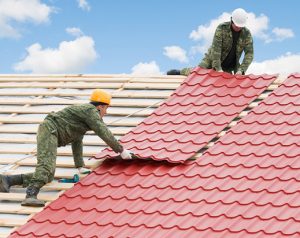
Insulation is a term that applies to a material that is used to insulate something, most commonly a building. Insulation is a material that acts as a barrier between the inside of your home and a markedly different temperature outside, minimizing heat loss or gain.
How home insulation works
Whether it’s winter or summer, when you heat and cool your home, the insulation needs to work to keep the inside temperature constant without the heating or air conditioning running constantly.
Proper home insulation can help lower your energy bills while keeping your home a comfortable place to live and hang out year-round. When talking about insulation, it’s important to understand how it will affect conduction (heat transfer) and convection (airflow), which will play a big role in the energy efficiency and comfort of your home.
Airflow into or out of your home is the movement of air through gaps and holes in walls, attics, basements, rim joists, doors, windows, and electrical outlets.
This air leak is a major problem in many homes, contributing to energy loss and discomfort. You can get all the benefits of insulation if you get your work done through Attic Wizard contractor.
Where do I need insulation?
Location – it’s the most important thing and it’s also crucial for insulating a home. The truth is that no house is built 100% insulated. Hence insulation contractors are very strategic in where they install insulation.
Although it won’t insulate every nook and cranny, it’s important to assess every space from the ground floor (or below) to the top of the roof. Your goal is to minimize the amount of air that enters or leaves your home. The following are the key areas to look:
*Walls and Floors
All exterior walls must be insulated. This will create a tight seal against the elements.
Drafty rooms and walls that are cool to the touch are signs that you need to improve your wall insulation.
Similarly, cold floors indicate the need for insulation in the space below and/or in the room where standing is uncomfortable. This is particularly true in rooms where the flooring rests directly on the exterior ground or extends beyond an exterior wall, as well as rooms above an uninsulated garage or basement.
*Ducts
Air ducts carry hot or cold air throughout the house. Proper insulation keeps air moving and maintains a constant temperature. Uninsulated or poorly sealed ductwork, on the other hand, can lead to energy loss, poor air circulation, and air quality problems.
Insulating and sealing the air ducts can solve these problems. When combined with specific room and space improvements, duct insulation can reduce energy use, lower your bills and create a more comfortable and healthier home.
*The basement
Insulating the basement creates a protective barrier against layers of soil outside your home. This can improve the comfort of finished basements, reduce energy use, and even help protect pipes and foundations.
Many older homes were built with uninsulated basements. Whether you use the space all the time or it’s largely unoccupied, it’s important to consider adding or improving insulation (the same goes for crawl space, if you have one).
*Doors and windows
Air leaks are the bane of any homeowner concerned with maximizing energy efficiency and lowering the electric bill. Poorly insulated windows and doors are two of the main culprits.
In both cases, high-quality insulation can reduce drafts. Entry doors should be insulated with weather stripping and a door sweep or shoe, as well as a weather-sealed gasket along the sill.
These improvements reduce the air coming in and out of your home when you open the door while also sealing cracks along the frame.
You have two options to insulate the windows. The first is to add insulation using weather stripping or caulking. Installing shutters can provide further insulation. The second alternative is to replace outdated windows with new ones that are more energy-efficient.
*The attic
Attics are among the most overlooked areas of any home. Although it may be nothing more than storage space for you, attic insulation problems can have a serious impact on your home’s energy efficiency and heating and cooling costs.
Upgrading your attic insulation can prevent hot air from escaping your home in the winter and reduce heat buildup in the summer. These enhancements can increase the
performance of your home from top to bottom.
What type of insulation do I need?
Now that you know where to add insulation, it’s time to decide what type of insulation is right for your home. Aside from the areas of your home that need insulation, the most important consideration is the R-value of the material.
The R-value is a measure of resistance to heat. Insulation materials are classified by their R-value. The local climate determines which insulation R-values are recommended for different areas of the home. The recommended R-Values for home insulation are:
- R-19 for basement walls and crawl spaces
- Minimum of R-13 for exterior walls
- R-49 for attics
Different materials have different R-values. The type of material you need depends not only on its effectiveness as an insulator but also on your budget. The different types of available insulations are give below:
*Mineral wool insulation
Mineral wool insulation is primarily created from recycled industrial materials such as slag (a byproduct of steel and other metal smelting), rock, or glass. As with fiberglass insulation, mineral wool can be installed in batt or blown material.
One of the main advantages of mineral wool insulation is its resistance to fire. It is also an effective sound absorber.

